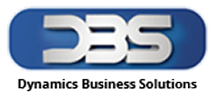Surprising fact: a single, integrated system cut payroll cycles by over 60% as a UAE firm grew tenfold in under three years.
The move came when the company adopted DynaPay Human Resources & Payroll, a native solution built for Microsoft dynamics 365 and business central. This unified platform stopped data silos and sped up pay and reporting across locations.
Developed in AL, the system kept the user experience familiar to teams already on Microsoft dynamics. Its advanced formula builder handled mixed workforces and regional rules so calculations stayed accurate as headcount rose.
Embedded employee self-service and Time & Attendance features cut HR bottlenecks. Power BI dashboards and workflows gave leaders real-time information for better decisions.
For U.S. companies seeking a modern, cloud-first option on the Microsoft stack, DynaPay offers a scalable, cost-competitive platform. Learn more about its capabilities on the DynaPay overview and the integration with Business Central.
Key Takeaways
- DynaPay provided one native platform on Microsoft dynamics 365 to support rapid growth.
- Built with AL, it minimized training and matched Business Central workflows.
- Advanced formulas and time tools reduced errors and compliance risk.
- Financial integration and reporting improved audit readiness and traceability.
- Subscription pricing scaled with the company, avoiding surprise costs.
From 50 to 500: The Business Impact of DynaPay for Dynamics 365 Business Central
As the team expanded, disjointed spreadsheets and third-party tools began to slow operations.
The scaling challenge: fragmented HR and payroll processes
Multiple systems caused duplicated entry and delayed cycles. That created errors and weakened compliance across business units.
Why an all-in-one platform mattered: unified data, fewer errors, faster cycles
Consolidating HR and payroll inside Microsoft dynamics 365 and business central centralized employee records, cut rework, and standardized approvals.
Time, leave, and compensation fed directly into pay runs, reducing manual touchpoints and accelerating processing.
Outcomes that translate to the U.S. market: accuracy, compliance, visibility
The advanced formula builder handled tax rules and state-specific changes without custom code. Real-time tracking from Time & Attendance improved forecasting and overtime control.
Integrated financial posting created a single ledger for audit-ready reporting and stronger internal controls.
- Faster cycles and fewer errors
- Clear audit trails and reporting
- Improved manager approvals and employee self-service
| Challenge | DynaPay Capability | U.S. Impact |
| Disconnected data | Centralized records in business central | Reduced rework, faster decisions |
| Complex tax rules | Advanced formula builder | Adaptable to state requirements |
| Labor tracking gaps | Time & Attendance + rostering | Better forecasting and audit trails |
Learn more about the benefits of integration for U.S. companies aiming to scale with confidence.
Payroll Software, HR Software, Cloud Payroll Software, Dynamics 365 BC
Scaling fast exposed gaps in how the firm tracked hours, benefits, and tax rules across locations. A single native solution removed manual handoffs and created one source of truth for employee records, pay elements, and approvals.
Integrated payroll and HR native to Microsoft Dynamics 365 Business Central
Native integration keeps employee data, leave, and compensation together inside microsoft dynamics 365. That reduces duplicate entry and speeds approvals.
Advanced formula builder for tax and pay complexity
The built-in formula engine adapts to varied tax brackets and benefit setups. It lowers custom coding and keeps results accurate as rules change.
Self-service, time, and workforce tools
Employees manage time-off, view payslips, and update details from a portal. Time & attendance, rostering, and timesheets standardize capture and improve tracking accuracy.
Performance, reporting, and cost model
Performance and learning modules centralize development and goal tracking. Power BI dashboards, automated workflows, and email alerts deliver timely information to managers.
| Capability | Benefit | U.S. Impact |
| Integrated records | Single source of truth | Fewer errors, faster audits |
| Formula builder | Flexible tax and pay rules | State-ready compliance |
| Time & attendance | Accurate hours and rostering | Better labor cost control |
| Power BI & workflows | Real-time insights | Faster decisions, touchless approvals |
Cost-competitive subscription scales with employees and users while preserving Microsoft dynamics usability. For a deeper look at how integrated payroll solves common issues, see seven practical ways this approach helps.
Seamless integration with Microsoft Dynamics 365: reliability, compliance, and control
Tighter integration means fewer gaps between finance and people operations. Built natively in AL for Business Central, DynaPay preserves the familiar interface and removes the need for fragile connectors.
Native design reduces cost and complexity
Developed with AL, the solution keeps workflows inside Microsoft dynamics 365 and cuts third-party maintenance. That lowers total cost of ownership and avoids duplicate tools across the business.
Financial mapping and audit-ready reporting
Payroll journals, dimensions, and cost centres post directly into business central. Finance teams get traceable ledger entries and standardized reporting for auditors and leadership.
Compliance, automation, and faster close
Configurable statutory logic and company-specific tax calculations keep operations compliant as rules change.
Power BI dashboards, workflows, and email notifications automate approvals and surface exceptions, shortening cycle times and improving visibility for the team.
- Seamless integration reduces reconciliation and maintenance effort.
- Embedded reporting ensures traceability from time capture to ledger postings.
- Consolidated platform improves resilience and lowers ongoing costs.
See a demo to watch how this payroll solution aligns finance and HR inside Microsoft dynamics 365 and to explore reporting and compliance features in your environment. Learn how to simplify HR and payroll operations with a native approach.
Conclusion
A unified, native solution made it possible to scale headcount while keeping data accurate and accessible.
DynaPay Human Resources & Payroll unifies employee records, time capture, and financial posting inside Microsoft dynamics 365 business central. That consistent interface shortens onboarding and increases adoption across teams.
The platform handles state-level tax logic with an advanced formula builder, captures time and rostering accurately, and delivers audit-ready information for leaders. Integration with Power BI and automated workflows reduces cycle times and frees staff for strategic work.
For U.S. companies seeking a scalable, cost-competitive solution developed in AL, DynaPay offers a future-proof path to reliable operations. Book a demo to see seamless integration, state-ready tax configurations, and real-time insights in your environment and validate customer-specific needs. Learn more about the benefits in these seven reasons to move to a cloud-based payroll.
Choose a platform that aligns people and finance. With experienced support from onboarding through ongoing success, DynaPay helps organizations scale without sacrificing accuracy, compliance, or speed.
Dynamics Business Solutions (DBS) is certified Microsoft Dynamics partner in UAE, we take pride in our ability to develop and deploy the right business solution that matches global client’s requirements. DBS has developed in-house state of the art solutions for HR and Payroll, Dynamo and DynaPay on top of Microsoft Dynamics 365 FO and Business Central respectively. These solutions are catering the all business needs of HR and Payroll departments. We provide best services and support to our clients.
To know more, speak to our expert at Dubai: +971 4 447 5525 Jeddah: +966 508162072 or inbox us your query at info@dynamics.ae OR visit www.dynamics.ae
FAQ
How did a UAE firm scale from 50 to 500 employees using DynaPay?
The firm consolidated fragmented HR and payroll tasks into a single platform native to Microsoft Dynamics 365 Business Central. This unified data flow reduced manual entry, cut payroll cycles, and improved compliance with local tax and labor laws. Automated time and attendance, onboarding, and benefits administration freed HR to focus on hiring and retention, enabling rapid, controlled growth.
What scaling challenges did the company face before implementing DynaPay?
The company struggled with disparate systems, duplicate data, delayed payroll runs, and frequent calculation errors. Lack of real-time reporting made headcount planning and cost forecasting difficult. These issues slowed hiring and increased administrative overhead, impacting operational agility.
Why is an all-in-one platform important for mid-size companies expanding rapidly?
A unified platform eliminates data silos, reduces reconciliation work, and lowers error rates. It streamlines processes like onboarding, time tracking, and tax calculations while providing managers with actionable dashboards. That combination accelerates decision-making and supports compliant growth.
What measurable outcomes did the firm see that apply to U.S. businesses?
They achieved faster payroll cycles, improved payroll accuracy, and clearer audit trails. HR workload dropped due to self-service tools, and finance gained reliable cost reporting. These gains translate well to U.S. companies facing complex tax, benefits, and labor compliance demands.
How does DynaPay integrate with Microsoft Dynamics 365 Business Central?
DynaPay is developed using AL for Business Central, enabling native integration without middleware. This ensures seamless financial posting, centralized employee master records, and synchronized ledgers for accurate payroll accounting and regulatory reporting.
Can the platform handle diverse tax scenarios and calculations?
Yes. The advanced formula builder supports multiple tax jurisdictions, deductions, and statutory contributions. Administrators can configure rules to reflect local legislation and complex pay elements, reducing reliance on manual calculations.
What employee self-service features are available?
Employees can submit timesheets, request leave, view pay slips, and manage benefits through a secure portal. Self-service reduces HR queries, speeds approvals, and improves data accuracy for time and attendance records.
How does the solution support time tracking and rostering?
The solution offers time & attendance capture, shift rostering, and integrated timesheets. These tools provide precise labor costs, support compliance with working-time rules, and feed directly into payroll to prevent under- or overpayments.
What talent and performance features are included?
The platform supports performance reviews, training records, and competency tracking. These modules help HR develop talent, align learning plans to business needs, and tie performance data to compensation and succession planning.
How are reporting and automation handled?
Power BI dashboards, configurable workflows, and automated email notifications provide real-time visibility and process control. Finance and HR get audit-ready reports and alerts for exceptions, approvals, and statutory deadlines.
Is the pricing model suitable for growing companies?
The offering uses a cost-competitive subscription model that scales by employee count and user roles. This lets companies align costs with headcount growth and avoid large upfront investments.
How does financial integration improve audit readiness?
Payroll postings flow directly into the general ledger with full traceability. Detailed transaction trails and standardized reporting formats make audits faster and reduce the risk of compliance gaps.
Does the solution support compliance across different states or countries?
Yes. Its configurable rule engine and tax formula capabilities let organizations adapt to state and country-specific regulations. Regular updates and local configuration options help maintain compliance as laws change.
What implementation considerations should U.S. companies know?
Successful deployment requires mapping current processes, cleaning employee and payroll data, and configuring tax and benefit rules. Executive sponsorship and cross-functional teams from HR, finance, and IT speed adoption and reduce disruption.
Can the platform integrate with existing time-clocks and attendance hardware?
The platform supports integrations with common time-capture devices and third-party attendance systems, allowing data import or API-based synchronization to maintain accurate labor records without duplicate entry.
How does the solution help reduce errors and manual work?
Automated calculations, centralized employee records, and pre-built workflows remove repetitive tasks. Validations and approval chains catch anomalies before payroll runs, cutting correction cycles and enhancing payroll accuracy.
Are data security and privacy addressed?
Yes. The system leverages Business Central security models, role-based access controls, and encryption to protect employee data. Audit logs and permission controls help meet corporate and regulatory privacy requirements.
What support and training are available during rollout?
Vendors typically offer project implementation services, end-user training, and ongoing support packages. Training focuses on administrators, payroll clerks, and managers to ensure smooth handover and sustainable operations.
How quickly can a company expect to see ROI?
Many organizations see reduced processing time, fewer payroll errors, and lower administrative costs within the first few payroll cycles. Improved reporting and faster month-end closes deliver financial benefits that contribute to positive ROI within months.
Who should be involved from the customer side for a successful deployment?
A cross-functional team including HR leads, payroll specialists, finance managers, and an IT representative ensures proper configuration, testing, and change management. Executive sponsorship helps prioritize the project and allocate resources.




